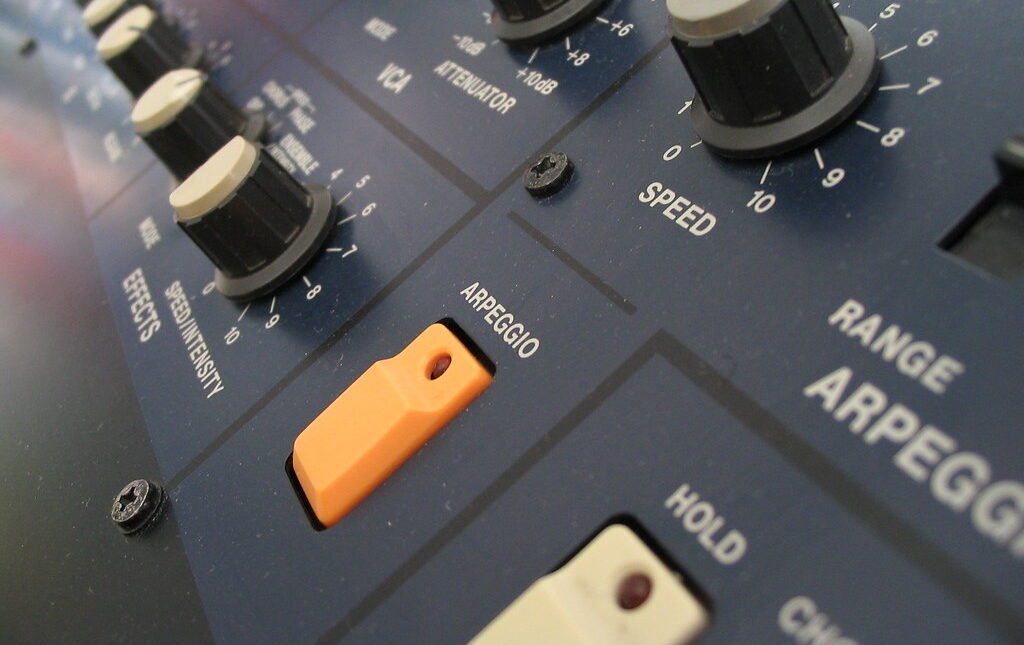
An arpeggiator in music production is a tool used to automatically play notes from a chord in a rhythmic or melodic pattern. It is a useful tool for creating interesting and dynamic melodies and basslines.
At its core, an arpeggiator takes a chord played on a MIDI-enabled instrument or input through a MIDI controller and automatically plays the individual notes in a sequence or pattern. The
Arpeggiators come in various shapes and sizes, ranging from simple built-in arpeggiators on hardware synthesizers to complex software plugins. They often offer various settings and parameters for controlling the arpeggiation pattern, such as the number of octaves, the direction of the pattern, and the timing of the notes.
One of the main benefits of using an arpeggiator is that it can quickly create complex and interesting melodies and basslines without requiring advanced music theory knowledge or manual note input. It can also help to create more variation in a song, as the arpeggiation pattern can be changed or automated over time.
Arpeggiators can be used in a variety of genres, from electronic dance music to classical music. They can be used to create driving basslines, atmospheric pads, and intricate melodies.
In addition to using arpeggiators on synthesizers and keyboards, they can also be used in software-based music production setups. Many digital audio workstations (DAWs) include arpeggiator plugins that can be used on any MIDI-enabled instrument or MIDI data.
In summary, an arpeggiator in music production is a tool that automatically plays notes from a chord in a rhythmic or melodic pattern. It can help to create interesting and dynamic melodies and basslines without requiring advanced music theory knowledge or manual note input. Arpeggiators come in various shapes and sizes and can be used in a variety of genres and music production setups.










































































































